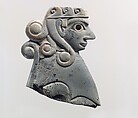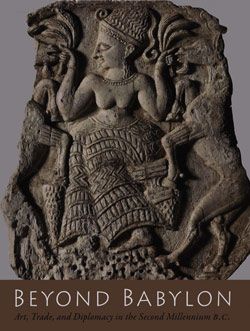Furniture plaque: female sphinx with Hathor-style curls
Not on view
This figure belongs to a group of carved ivories, mostly furniture elements, probably found at the site of a palace at Acemhöyük in central Anatolia. Most of the ivories depict imagery borrowed and transformed from Egyptian sources, such as the sphinx represented by this plaque, a fantastic creature that combines a human head with a lion’s body, with or without wings. Although the bottom of the plaque is broken away, parts of the creature’s leonine hind leg and tail are still preserved. The sphinx has a hairstyle of long, curled locks similar to that worn by the Egyptian goddess Hathor. She wears a fillet across the forehead, above which three additional short curls rise. One lock is tucked behind a large ear. The eye, hollowed out to receive an inlay (now missing), and nose are prominent, and the mouth and chin are small. The overall gray color indicates that the object was exposed to considerable heat, perhaps during the destruction of the palace. A nearly identical plaque from the same group, depicting a sphinx facing left, is also in the Metropolitan Museum’s collection (36.152.2).
This image cannot be enlarged, viewed at full screen, or downloaded.


